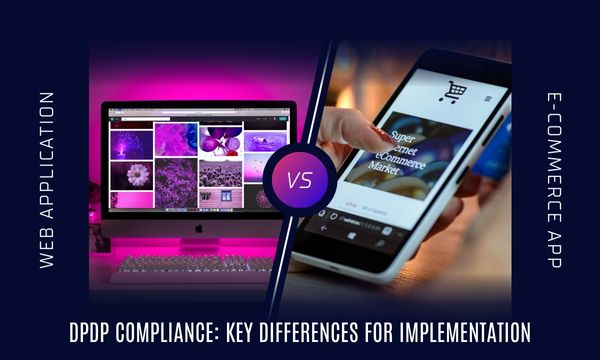
In an age where digital transformation is revolutionizing industries, the manufacturing sector stands at a critical juncture. As advanced technologies like IoT, AI, and automation become integral to manufacturing operations, the cyber threat landscape is expanding at an alarming rate. But are manufacturing organizations truly prepared to combat these evolving threats?
A recent study revealed that cyberattacks on manufacturing organizations have surged by over 200% in the past five years. These attacks are no longer just targeting data; they are aiming to disrupt production, compromise supply chains, and steal valuable intellectual property. The consequences of a successful cyberattack can be devastating, leading to massive financial losses, regulatory penalties, and irreparable damage to brand reputation.
Yet, despite the rising tide of cyber threats, many manufacturing companies continue to rely on outdated legacy systems, lack comprehensive cybersecurity strategies, and struggle to maintain compliance with industry regulations. The complexity of industrial networks, coupled with a significant shortage of cybersecurity expertise, makes the task of securing manufacturing operations even more daunting.
So, what are the major cybersecurity challenges facing the manufacturing sector, and how can these organizations effectively address them to ensure the security of their business, factories, and data? Let’s delve into the key challenges and explore actionable solutions to fortify the cybersecurity posture of manufacturing organizations.
What Are the Major Cybersecurity Challenges Facing the Manufacturing Sector?
1. Legacy Systems: A Ticking Time Bomb
Did you know that a significant portion of manufacturing facilities still rely on legacy systems that were not designed with modern cybersecurity threats in mind? These outdated systems often lack the necessary security measures, making them prime targets for cyberattacks.
2. The Complexity of Industrial Networks
Manufacturing networks are a complex mix of IT and Operational Technology (OT) systems. Integrating these systems securely poses a significant challenge, especially when each requires different security approaches.
3. The Cybersecurity Skills Gap
The shortage of cybersecurity professionals with expertise in both IT and OT is alarming. In fact, a 2023 study revealed that 68% of manufacturing companies struggle to find qualified cybersecurity staff.
4. The Continuous Operation Dilemma
Manufacturing operations often run 24/7. How can you apply critical security updates and patches without causing costly downtime? This is a challenge that many manufacturers grapple with.
5. Compliance Complexities
Navigating the maze of industry-specific cybersecurity regulations and standards can be daunting. Ensuring compliance across all operations and systems is a continuous struggle.
6. Budget Constraints
With tight margins, allocating sufficient budget for cybersecurity initiatives can be difficult. However, the cost of a cyber incident can far outweigh the investment in preventative measures.
7. Supply Chain Security
Manufacturers are heavily reliant on a vast network of suppliers. Ensuring that each supplier adheres to robust cybersecurity practices is a monumental task.
8. Intellectual Property Theft
Manufacturers invest heavily in R&D. Protecting this intellectual property (IP) from cyber thieves is critical to maintaining a competitive edge.
9. Remote Access Risks
With the rise of remote work, securing remote access to critical industrial systems has become a pressing concern.
10. Employee Awareness
Human error remains one of the leading causes of cybersecurity breaches. Regular training and awareness programs are essential but often overlooked.
How Can Manufacturing Organizations Overcome These Challenges?
To combat and resolve the cybersecurity challenges in the manufacturing sector, organizations can adopt a multifaceted approach that combines technology, process improvements, and workforce training. Here are some strategies to enhance security:
-
Upgrade and Secure Legacy Systems:
* Conduct a thorough assessment of existing legacy systems to identify vulnerabilities.
* Gradually replace outdated systems with modern, secure alternatives, ensuring minimal disruption to operations.
* Implement compensating controls, such as network segmentation and intrusion detection systems (IDS), to protect legacy systems that cannot be immediately replaced.
-
Implement Robust Network Segmentation:
* Segregate IT and OT networks to limit the spread of potential cyberattacks.
* Use firewalls, virtual LANs (VLANs), and secure gateways to control access between different network segments.
-
Enhance Cybersecurity Expertise:
* Invest in hiring and retaining cybersecurity professionals with expertise in both IT and OT.
* Provide ongoing training and certification opportunities to existing staff to keep them updated on the latest cybersecurity trends and practices.
-
Develop a Patch Management Strategy:
* Establish a comprehensive patch management program to ensure timely updates of all systems and software.
* Schedule maintenance windows to apply patches without disrupting production.
-
Ensure Regulatory Compliance:
* Stay informed about relevant cybersecurity regulations and industry standards.
* Conduct regular compliance audits and gap analyses to ensure adherence to regulations and standards.
* Engage with industry associations and regulatory bodies for guidance and best practices.
-
Allocate Adequate Budget for Cybersecurity:
* Advocate for a dedicated cybersecurity budget to ensure sufficient resources for implementing and maintaining security measures.
* Present the potential risks and financial impacts of cyber incidents to justify cybersecurity investments.
-
Strengthen Supply Chain Security:
* Conduct thorough security assessments of suppliers and partners.
* Include cybersecurity requirements in contracts with third parties.
* Implement a vendor risk management program to continuously monitor and mitigate risks from the supply chain.
-
Protect Intellectual Property (IP):
* Implement strong access controls and encryption to safeguard IP.
* Use data loss prevention (DLP) solutions to monitor and protect sensitive data.
* Regularly review and update IP protection policies and procedures.
-
Secure Remote Access:
* Implement multi-factor authentication (MFA) and secure VPNs for remote access.
* Use zero-trust security principles to verify and monitor all access attempts.
* Regularly review and update remote access policies.
-
Employee Training and Awareness:
* Develop a comprehensive cybersecurity training program for all employees.
* Conduct regular training sessions, simulations, and awareness campaigns to keep cybersecurity top of mind.
* Foster a culture of cybersecurity awareness and responsibility.
-
Incident Response and Recovery Planning:
* Develop and maintain an incident response plan that includes roles, responsibilities, and procedures for handling cyber incidents.
* Conduct regular drills and simulations to test and refine the plan.
* Ensure data backups are secure, up-to-date, and regularly tested for recovery.
-
Implement Continuous Monitoring and Detection:
* Deploy advanced monitoring tools such as Security Information and Event Management (SIEM) systems, IDS, and Endpoint Detection and Response (EDR) solutions.
* Establish a Security Operations Center (SOC) or partner with a Managed Security Service Provider (MSSP) for 24/7 monitoring.
-
Enhance Data Protection and Privacy:
* Implement strong encryption for data at rest and in transit.
* Use role-based access controls to limit data access to authorized personnel only.
* Regularly review and update data protection policies.
-
Manage Third-Party Risks:
* Establish a third-party risk management program to assess and mitigate risks from vendors and service providers.
* Require third parties to comply with your organization’s cybersecurity policies and standards.
* Conduct regular security audits of third-party partners.
-
Secure New Technologies:
* Integrate security into the design and implementation of new technologies such as IoT, AI, and machine learning.
* Conduct regular security assessments and vulnerability testing on new technologies.
* Stay informed about emerging threats and mitigation strategies for new technologies.
By implementing these strategies, manufacturing organizations can significantly enhance their cybersecurity posture, protect critical assets, and ensure the security and continuity of their operations.
Conclusion
The path to cybersecurity resilience in manufacturing is fraught with challenges, but it is navigable. By adopting a comprehensive, proactive approach, manufacturing organizations can protect their critical assets, ensure compliance, and secure their future in an increasingly digital world. Remember, the cost of prevention is far less than the price of recovery. Is your organization ready to take the necessary steps to safeguard its operations?
Stay ahead of cyber threats and secure your manufacturing operations today. Contact our team of cybersecurity experts to learn more about how we can help you implement robust security measures tailored to your unique needs.



